Our blog was created to help make the world of wine and beer easier to understand and fun to navigate. There are a million things to know in this industry, we just want to help you understand the latest news and trends from around the globe. So sit back with your favorite sip and let's go on an adventure.
What’s with NA?: The Rise of Non-Alcoholic Beer, Wine, and Spirits Replacements
Over the past few years, a profound shift has taken place in the way people approach socializing, relaxation, and celebration. The rise of the non-alcoholic beverage movement has challenged the long-standing association between alcohol consumption and socializing. Non-alcoholic beer, wine, and spirit replacements have become more than just alternatives; they represent a cultural shift towards a healthier, more mindful lifestyle. At the The Thief, we’ve seen a dramatic increase in NA beverage sales and requests for NA alternatives. For this reason, we want to take a closer look at the grounds behind the growing popularity of non-alcoholic alternatives, their impact on social dynamics, and the innovations driving this transformative movement.
The Changing Landscape
The relationship between humans and alcohol has a long and complex history. Traditionally, alcoholic beverages have been deeply ingrained in various cultures as a means of celebration, relaxation, and socialization. However, as awareness of health and wellness has increased, so too has the desire for alternatives that allow individuals to participate in social rituals without the negative effects of alcohol.
Enter non-alcoholic beverages — an industry that has evolved from producing mere imitations to crafting sophisticated and satisfying alternatives. Beverage companies have recognized the demand for non-alcoholic options that go beyond sugary sodas and fruit juices, leading to a boom in the production of high-quality, non-alcoholic beverages that mimic the taste and experience of their alcoholic counterparts. From beer and wine to spirit replacements, the options are seemingly endless – a dramatic leap from the handful of options available just a short time ago.
Health and Wellness Trends
One of the driving forces behind the surge in non-alcoholic beverage consumption is the global focus on health and wellness. As people become more conscious of their lifestyle choices, including diet and exercise, the negative impact of alcohol on physical and mental health has come under scrutiny. Non-alcoholic alternatives offer a compromise — allowing individuals to enjoy the social aspects of drinking without the potential harm associated with alcohol.
Additionally, non-alcoholic beverages often boast fewer calories and less sugar than their alcoholic counterparts. This aligns with the growing awareness of the impact of excessive sugar intake on overall health, making non-alcoholic alternatives an attractive choice for those seeking a balanced lifestyle.
Mindful Drinking Culture
The concept of "mindful drinking" has gained traction as part of a broader movement encouraging individuals to be more conscious of their alcohol consumption. Mindful drinking involves being aware of why, when, and how much one is drinking. Non-alcoholic beverages provide a solution for those who wish to participate in social activities without the risk of overindulgence or the negative consequences associated with excessive alcohol consumption.
This cultural shift is evident in the rising popularity of alcohol-free bars and events. These venues offer an inclusive environment where people can socialize without the pressure to consume alcohol. The rise of the mindful drinking culture signals a departure from the traditional notion that alcohol is a prerequisite for a good time.
Craftsmanship in Non-Alcoholic Beverages
As the demand for non-alcoholic options grows, beverage producers have responded with a wave of innovation, creating non-alcoholic alternatives that rival their alcoholic counterparts in terms of flavor, complexity, and craftsmanship. Craft breweries, winemakers, and distilleries have embraced the challenge of producing sophisticated non-alcoholic beverages that appeal to the discerning palate.
Non-alcoholic beers, for example, now come in a variety of styles, from hoppy IPAs to rich stouts. These alternatives are crafted with the same attention to detail as traditional beers, using quality ingredients to ensure a satisfying drinking experience. Similarly, non-alcoholic wines have evolved beyond the overly sweet grape juice stereotype, offering a diverse range of flavors and varietals that cater to different tastes.
Spirit replacements, often referred to as "alcohol-free spirits," have become a focal point of innovation in the industry. These products aim to replicate the complex flavors and aromas found in traditional spirits, providing a base for non-alcoholic cocktails or "mocktails." With botanical infusions, spices, and carefully selected ingredients, alcohol-free spirits are giving consumers a sophisticated alternative to traditional alcoholic beverages.
Social Impacts and Inclusivity
The emergence of non-alcoholic alternatives has significant social implications, fostering a more inclusive environment for individuals who choose not to drink or are in recovery. Social gatherings no longer revolve solely around alcohol, making it easier for those who abstain to feel comfortable and included.
Non-alcoholic options also appeal to a broader audience, including pregnant individuals, designated drivers, and those taking medication that interacts negatively with alcohol. This inclusivity aligns with a more considerate and compassionate approach to socializing, where the emphasis is on shared experiences rather than the type of beverage in hand.
Economic Opportunities and Market Growth
The non-alcoholic beverage market is experiencing unprecedented growth, presenting economic opportunities for both established companies and startups. As consumer preferences shift towards healthier alternatives, beverage producers are capitalizing on the demand for non-alcoholic options, resulting in increased product diversity and innovation.
Investment in non-alcoholic beverage production has surged, with many companies allocating resources to research and development. This commitment to creating high-quality non-alcoholic alternatives demonstrates a long-term belief in the sustainability and profitability of the industry.
Conclusion
The rise of non-alcoholic beer, wine, and spirit-replacements represents a transformative movement that goes beyond mere trendiness. It reflects a fundamental shift in societal attitudes towards alcohol, health, and socializing. As consumers continue to prioritize well-being and mindfulness, the demand for sophisticated, non-alcoholic alternatives will likely continue to grow.
The non-alcoholic beverage movement is not just about offering alternatives; it's about creating a more inclusive and conscious drinking culture. As the industry evolves, it has the potential to redefine social norms, providing individuals with choices that align with their values and contribute to a healthier, more balanced lifestyle. Whether you're seeking a non-alcoholic option for health reasons, personal choice, or simply to expand your palate, the diverse and innovative world of non-alcoholic beverages offers something for everyone. Cheers to the evolution of mindful drinking!
Sip Local: The Importance of Supporting your Neighborhood Wine Shop
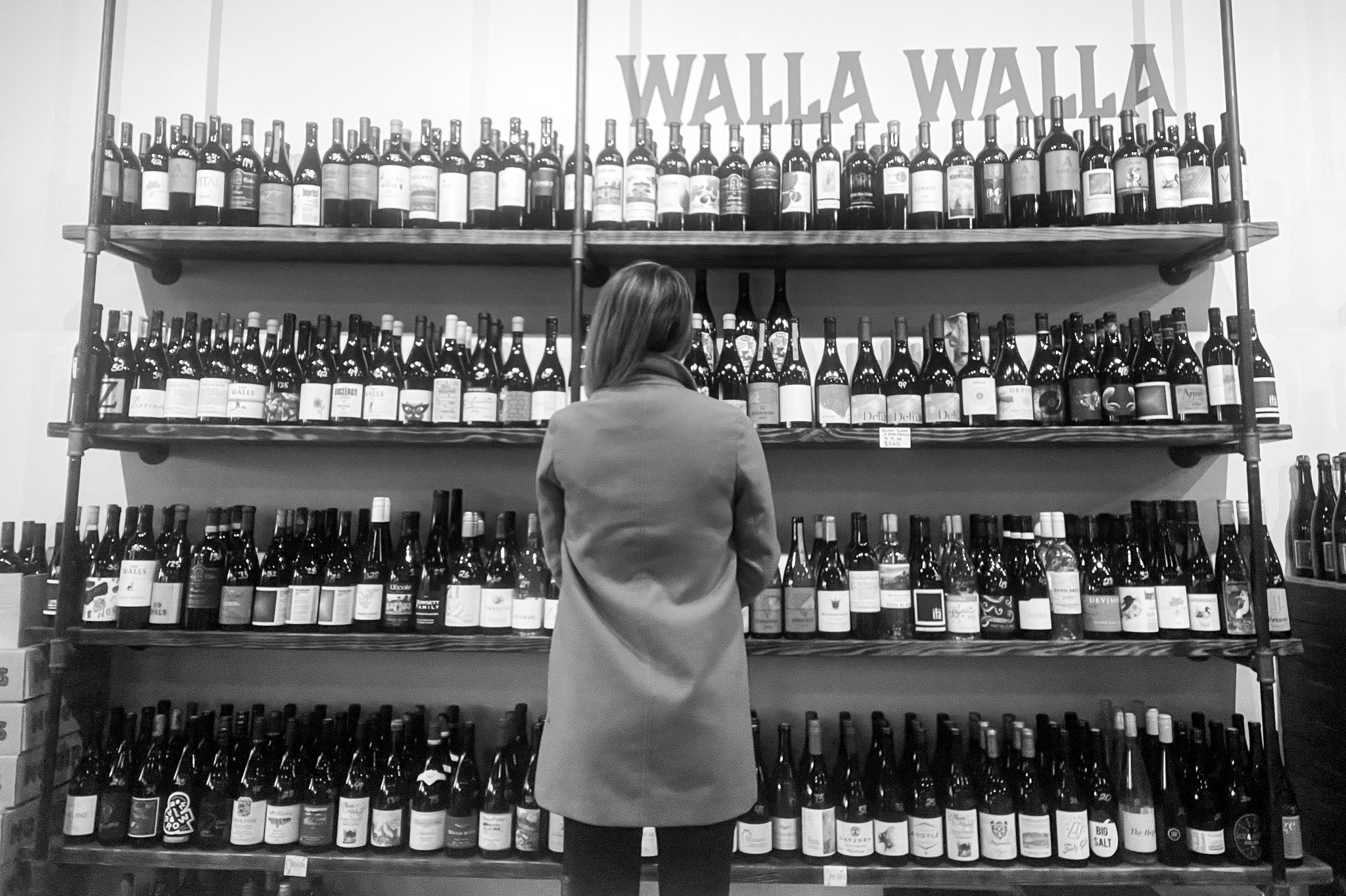
In an era dominated by online marketplaces and big-box retailers, the charm and significance of local businesses often get overshadowed. Assuredly, we can resonate with the convenience of shopping in your jammies from your couch. Even so, there's something uniquely satisfying about stepping into your local wine shop. Beyond the mere act of purchasing a bottle, shopping at a neighborhood wine store offers unique advantages that extend far beyond the immediate transaction. Supporting your local wine shop is not just a choice; it's an investment in your community and a celebration of the artistry and passion that goes into every bottle.
1. Unique Selections and Expert Guidance
Local wine shops, like The Thief, pride themselves on curating a distinctive selection of wines that reflect the tastes and preferences of their community. Unlike larger retailers, small wine shops tend to focus on quality over quantity, showcasing hidden gems and boutique wines that might not be easily found elsewhere. When you walk into your local wine shop, you're not just browsing shelves; you're embarking on a journey of exploration guided by the knowledgeable staff.
The expertise of local wine shop owners and staff is invaluable. They can offer personalized recommendations based on your taste preferences, budget, and the occasion. Whether you're a seasoned oenophile or a casual wine enthusiast, the chance to engage in a conversation with someone who is genuinely passionate about their craft can enhance your wine-buying experience, leading to discoveries you might have otherwise missed.
2. Community Connection and Local Economy Boost
One of the most tangible benefits of shopping locally is the direct impact on your community. When you choose to buy from a neighborhood wine shop, you're supporting local entrepreneurs who have invested time, energy, and resources to establish and maintain their business. The money spent at these establishments circulates within the community, helping to create a cycle of economic growth.
Local wine shops are often intertwined with the fabric of the community. They sponsor events, collaborate with local artists, and participate in neighborhood initiatives. By contributing to these establishments, you're fostering a sense of community and ensuring that your dollars go towards supporting local causes, whether it's a charity event, a youth sports team, or the improvement of public spaces.
3. Personalized Customer Service
In a local wine shop, you're not just another face in the crowd. The personalized customer service experience is a hallmark of these establishments. Staff take the time to get to know their customers, remembering their preferences and helping them discover new wines tailored to their tastes.
Unlike the impersonal nature of online shopping, local wine shops provide a welcoming environment where you can seek advice, ask questions, and engage in conversations about the world of wine. This level of personal attention is a rarity in today's retail landscape, making the local wine shop a haven for those who appreciate a human touch in their shopping experience.
4. Discovering Hidden Gems
While large retailers may carry popular and widely recognized wine brands, local wine shops often take pride in seeking out under-the-radar producers that you won't find on the shelves of supermarkets or mega liquor stores. These hidden gems could be artisanal wines produced by local vineyards or international selections that haven't yet gained widespread fame.
Exploring the aisles of a local wine shop is like embarking on a treasure hunt, where each bottle has a story waiting to be discovered. By choosing to shop locally, you open yourself up to a world of diverse flavors and styles that may not be part of mainstream consciousness but are certainly worth exploring.
5. Environmental Impact
Choosing to shop local can also contribute to a smaller environmental footprint. Local businesses often source their products regionally, reducing the carbon footprint associated with transportation. Often, local wine shops prioritize sustainable and eco-friendly practices, offering a selection of wines from producers who adhere to environmentally conscious methods of viticulture and winemaking.
When you support local businesses that prioritize sustainability, you're indirectly contributing to the overall health of the planet. This environmentally friendly approach is a compelling reason to opt for the neighborhood wine shop over larger, more ecologically taxing alternatives.
6. Tasting Events and Education
Local wine shops are more than just retail spaces; they're hubs of wine education and appreciation. Many shops host regular tasting events, where customers can sample new arrivals, learn about different varietals, and gain insights into the art of wine pairing. These events foster a sense of community among wine enthusiasts and provide an opportunity to expand one's palate in a social setting. The Thief hosts weekly Thursday tasting events, featuring a wide array of wines from around the world. Each week, our customers get a unique opportunity to broaden their global wine lens.
The educational aspect of local wine shops extends beyond events. Staff are eager and happy to share their knowledge, offering guidance on everything from wine regions and production methods to food pairings and aging potential. This commitment to education enhances the overall customer experience and deepens the connection between patrons and their local wine shop.
Conclusion
In a world where convenience often takes precedence, the act of consciously choosing to shop at your local wine store becomes a powerful statement. It's a statement in support of community, a celebration of diversity, and a recognition of the passion that goes into each bottle. While online shopping may offer efficiency, it can’t replicate the personal touch, the sense of discovery, and the community connection that local wine shops provide. So, the next time you're in the market for a bottle of wine, consider taking a detour to your neighborhood wine shop (ahem, The Thief!) – you might just find more than a bottle; you'll discover an enriching experience that goes beyond the contents of the glass. Cheers to supporting local and sipping with a purpose!
The Thief's Annual Guide for Surviving the Holidays

Fall is in the air. For those of us who choose to participate, this might mean that you're waiting in a significantly longer line at Starbucks to get your totally-not-a-pumpkin-spice latte from a barista who's looking a little more tired than usual. Maybe it means you've decided to break out your winter coats a little too early, only to realize that the sun is still providing ample warmth outside but you've already committed to your outfit choice.
Whatever your personal Fall rituals may be, there is one thing that most of us can all agree on as a universal truth for the changing of the seasons: The Holidays are around the corner, and that usually means having to spend time with the in-laws (or out-laws) or other extended family members that you wish were a little more than just "twice-removed".
Unfortunately for both of us, dear reader, I gave up on pursuing my degree in Psychology, so I can't help you very much with how to navigate your Aunt Helen as she slowly slips into madness, nor am I qualified to give advice on how to traverse a dysfunctional and freshly-adult relationship with that weird cousin that your parents have insisted you take under your wing since you were both children. I can, however, help prescribe you medication in the form of delicious fermented beverages that may help with the sting of social obligations.
So, after much collaboration and deliberation about holiday libations, I've put together a list of recommendations that I hope fill you with elation. I'm taking a bit of creative liberty to name this blog "The Thief's Annual Guide for Surviving the Holidays'', or TAGSH for short, which kind of sounds like me trying to say "thanks'' after a few too many beverages. By the end of this guide, I hope you'll be saying Tagsh too. Here's to a happy Tagshgiving, everyone.
Beaujolais
I don't think I'd still be happily employed at The Thief if I didn't recommend Beaujolais somewhere on this list, so I'm knocking it out immediately. Some people would call Beaujolais the "Poor Man's Burgundy". As a poor man, I resent that statement. I prefer to call it "my favorite way to get drunk on a Sunday". It turns out Beaujolais is also pretty enjoyable on Thursdays, and is especially enjoyable when that Thursday happens to fall on the 4th week of November. How convenient!
In a nutshell, when I say "Beaujolais", I am referring to a region in France just west of Paris and Lyon, and just South of Burgundy. The grape primarily grown here is Gamay, which is what you should be drinking if you've purchased a bottle of Beaujolais. If it's not, congratulations - you found a truly unique and nerdy bottle of wine, but that's not what we're talking about in this blog post. Maybe we can discuss that in the future, if my managers are silly enough to let me continue writing these blogs.
Getting back into our crash course in Beaujolais, there are a few different crus (or appellations) located in the region, with each cru having stylistic differences that set their wines apart from the others. These crus make the most serious style of Beaujolais, with distinctive character and a beautiful freshness that's appealing for even the most war-torn palate. For the sake of keeping my word count on the lower side, the two appellations I'm choosing to focus on for this field guide are Fleurie and Chiroubles.
Fleurie
Some would consider wines from Fleurie to be "feminine", in the sense that they are floral and delicate. As a man that smells floral and can be delicate at times, I resent this statement. Nevertheless, the descriptors are true. Compared to other crus in Beaujolais, wines from Fleurie tend to be a little more subdued, soft on the palate, and fairly fragrant.
This is a classic pairing for Thanksgiving dinner for a few reasons, chiefly because the flavors that are perceived in Fleurie wines are a natural pairing with classic Thanksgiving dishes.
I'm a big fan of Anne Sophie Dubois as a producer of Fleurie. Not only are some of her wine labels hilariously adorable, but she's a pretty damn good winemaker as well. Her most readily-available and approachable cuvee is "Les Cocottes", in which she opts for whole cluster fermentation as opposed to her usual 100% destemmed style. Expect just a bit more herbal and earthy notes than your typical Fleurie, which should help make your Uncle's obviously overcooked turkey go down a little easier.

Chiroubles
Another cru where the wines pair excellently with Thanksgiving faire is Chiroubles. Similar to Fleurie, wines from Chiroubles are very expressive aromatically. The chief difference is that Chiroubles is the highest elevation for all the crus, and the resulting wine is generally the lightest bodied and "freshest" style of Beaujolais. If Fleurie is for dinner, I'd suggest Chiroubles for appetizers. Fortunately for both of us, getting intoxicated via wine is socially acceptable so long as there's some sort of cheese and meat tray in front of you, so you'll be nice and socially lubricated well before the turkey even makes a showing.
As far as producers go, I'd recommend Daniel Bouland. Most noteworthy for his work in Morgon (another cru I won't dive into in this blog post), you can expect his wines to be just slightly more complex than your average Chiroubles. Much like the bottle I selected from Anne Sophie Dubois, Bouland opts for whole cluster fermentation, which will add much more structure and depth to the wine while preserving the juicy lushness one would expect from the region. My hope with this pick is that should your dear aunt Debrah nag you for a glass of wine, you'll be able to pour her something she might actually be able to taste after chain-smoking a pack of Marlboro Blacks in the back patio. You're not so sneaky, Debrah.

Beer
It's entirely likely that one member of your family insists that wine is for sissies and refuses to drink anything made out of grapes (their loss). Maybe it's because the Coors you've kept in the refrigerator in the garage is well past its recommended drinking date after stocking the fridge last year. Or maybe Debrah really enjoyed that Beaujolais you brought with you and now you've run out of wine before dinner. Never fear, I have a recommendation for those of you that wish to enjoy something a little more grain-ular.
Rodenbach Grand Cru
If you've purchased beer from me before, I've probably attempted to peddle off some sort of sour ale to you. Unlike milk, sour beer is actually a desirable and delicious treat that is intentionally made to be acidic and tart.
Most beers that are produced are made in a sanitary environment primarily to make sure that wild yeast and bacteria don't muck up the beer during fermentation. Sour beers flip that concept on its head: at some point during fermentation, usually during the cooling of the wort, bacteria and wild yeast are introduced to the beer, usually by exposing the ferment to an open air environment.
For Flanders style sour ales, the beer is typically fermented with a certain type of bacteria called Lactobacillus, which has an incredibly wide variety of uses and is found in… a wide variety of different places… (fermentation is a wild world, y'all). For the case of our Flanders ales, this bacteria provides a slightly sour character that's similar to lactic acid.
Rodenbach is arguably one of the most famous producers of Flanders ales in the world, and the Grand Cru is one of the very best the producer offers year round. This is what the brewery is known for. The process by which they make it is incredibly text dense, so I won't dive too deep into how it's made here. If you're interested in learning more, however, feel free to read this write-up I found here: (https://www.beervanablog.com/beervana/2021/1/22/making-of-a-classic-rodenbach).
I've included a Flanders ale because it's essentially the closest you can get to wine in a beer form. The final product is a blend of aged beer with fresh beer. Specifically, the Grand Cru is composed of 2/3rds aged beer with the remaining composed of a fresh beer. This beer has just enough complexity to impress even the most pretentious of palates, but is approachable enough to appeal to even the least-snobby of those beer-crushing folk in your family.
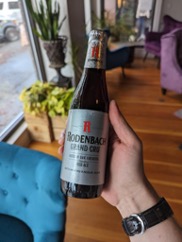
Digestif
But Flint, what about after dinner? Assuming that you haven't gotten absolutely plastered while pretending to love your extended family in the first few rounds, I think that dipping into some post dinner treats is absolutely deserved. Sure, you could sneak an Underberg or two in the bathroom, but I think we're all a little past the point of trying to hide who we really are during the holiday seasons. Amaro is your friend here. I think it's the best option as far as digestifs go, but we're gonna have to be a little selective here as far as what we pick because not all amari is created equally. In fact, much like Italian wine, Italian liqueur is incredibly complicated and confusing. The Italians are laughing at our misery, surely.
Averna
Surely you've heard of Aperol before? Maybe an Aperol Spritz? An absolute tidal wave of influencers shoved that down our throats this summer and the last, and it got so bad in our shop that we actually had to limit our frothing-mouthed customers to a measly one-bottle-per-person. If you were one of those people, I'm sorry; however, I feel much better about recommending something in the same category that's equally delicious. I'm talking about Averna here, which is an amaro just like Aperol. Before I talk about Averna, I should probably explain what an amaro is, otherwise things are gonna get real confusing real fast.
Simply put, amaro is an Italian liqueur made out of grape brandy that has been infused with a mix of herbs and spices (sometimes tree bark). The specific ingredients used in each type of amaro is usually a closely-guarded family secret, so I've found that it's usually easier to describe each individual amaro by how it tastes and the feeling it gives me.
So, in the case of Averna, one can expect the typical bittersweet notes of an amaro, but Averna stands out particularly because of its strong orange and licorice flavor profile and strong notes of caramel. The caramel notes help balance the bittersweet in this amaro, ultimately making it one of the most approachable amari on the market today. It can be consumed neat, but I typically enjoy Averna most with a bit of ice for dilution, and a splash of soda water if I have some available.
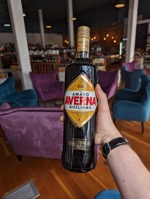
Honorable Mentions
There are a few wines that didn't make the list, mainly because I wanted to introduce some goodies that you may not find listed on Buzzfeed this year. That being said, there are some classics that I must mention so that I can sleep tonight.
Special Club Champagne
'Tis the season for Special Club champagne. Special Club champagne refers to a small handful of grower producers (champagne houses that grow and process their own fruit) that put out a special bottle of what they would consider to be the best wine from their best vintage. It truly is some of the best-of-the-best when it comes to champagne, and we have a whole lot of it in the shop this year.
My favorites this year: Gaston Chiquet, Moussé Fils, and Duménil.
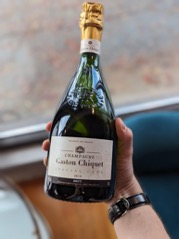
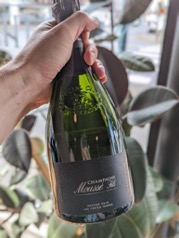
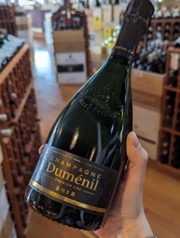
Lambrusco
Lambrusco is probably the most classic pairing for Thanksgiving dinner. I lack the verbiage to properly explain how hilariously well this wine pairs with such an American tradition given it's coming from Italy, but you'll just have to trust me on this one. If you haven't had Lambrusco in awhile (like 20 years or so) I'm happy to announce that there are a lot of producers that are making much more serious bottles of Lambrusco than what we used to get in the states many moons ago.
I recommend Cleto Chiarli's "Vecchia Modena". This thing is an absolute steal for the price.
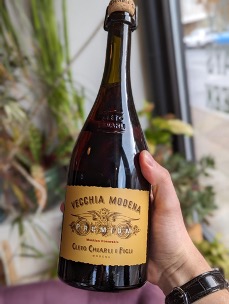
Signing Off
Alright, that was a lot. My therapist warns me of oversharing, but I feel like that's exactly what blog posts are for. Assuming you've made it this far, congratulations. It is my great hope that you have found something within this field guide that tickles your fancy, and that you have been instilled with the confidence to bring a suitable libation (or libations) to whatever unfortunate family gathering you've been guilted into attending this year.
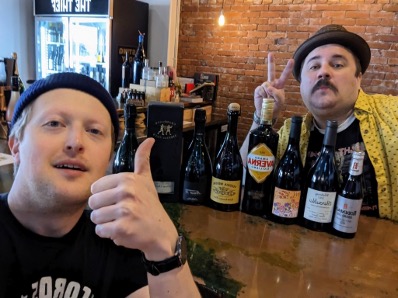
Cider Savvy
Fall swept into town pretty suddenly. One moment we were wearing t-shirts and shorts on Walla Walla’s scorching patios, trying in vain to eat our way through the midseason Sun Gold glut, the next we were pulling forgotten sweaters out of wool-scented closets and trying to remember how to eat a spaghetti squash. Grape harvest pulled its signature “objects in mirror may be closer than they appear” trick, and a leisurely August rapidly shifted into a frantic September. We’ve had a lot of purple hands in the shop lately.
In our industry, “harvest” will always mean grapes, but the valley has many other harvests: the rush of springtime green during asparagus season, wheat harvest with its dusty sunsets, sweet onions by the smelly 40 pound sack, the Art Deco alien landscaping of Hayshaker’s radicchio. And apples! So many apples! Before grapes, this valley was filled with orchards; in fact, many of the best vineyards in Walla Walla, especially in the Rocks District, are planted on former orchard land.
Apples and wine grapes have a number of things in common. Current research suggests that they both originated near the Caspian Sea. They are both woody perennial plants that require years of growth before they begin fruiting, but once established they can last for decades or centuries. And, most importantly for us at the Thief, humans have been transforming their fruit into fermented beverages for thousands of years. Cider is to apples what wine is to grapes (freshly pressed, unfiltered, unfermented apple juice is often referred to as cider, but when I use the term, I mean the alcoholic product).
“Now, wait a minute. I’ve had cider before. It came in a can, it tasted like sweet apple soda, and it gave me a tremendous headache. Pretty sure there was a woodchuck or a mongoose or something on the label. That wasn’t anything like wine.” Here I have to differentiate between two fundamentally different products that unfortunately are both called “cider”. In the interest of pedagogical clarity, and at the risk of sounding like a complete snob, I’m going to refer to the previously mentioned sweet, six-packed product as “industrial cider”, and the more wine-like, artisanal, often 500-750ml packaged cider as “fine cider”.
Let’s look at the way most industrial cider is produced, starting with the raw materials. Industrial cider is typically produced with rejected culinary fruit, the Granny Smiths and Honey Crisps etc that don’t make the cut for our grocery store shelves. These apples are grown in densely planted, resource intensive orchards, heavily watered and fertilized to maximize the yield per acre, producing big, shiny, delicious apples. Unfortunately, delicious apples do not necessarily make delicious cider, in the same way that table grapes don’t make delicious wine. Wine grapes have thick skins filled with color, flavor, and texture, as well as gnarly seeds and much less juice (water) than table grapes.
Those big, juicy apples are kept in storage with closely controlled temperature and gases that prevent further ripening, which means we can eat a delicious Fuji apple well after the harvest window. This also allows the industrial cider maker to pick and choose their production dates, turning over their tanks many times throughout the year. This turns the cider making process into a year round activity more akin to brewing beer than making wine. The juice is often watered back, fermented quickly, back sweetened, filtered, stabilized, and brought to market quickly, typically in a month or two (again, like beer).
Fine cider, on the other hand, is typically a vintage product. It is the result of one season’s harvest, picked and pressed over the course of a couple months. It is usually made from 100% fresh pressed juice (no concentrate, no water added). The orchards are often much less densely planted, sometimes with animals grazing underneath. Orchard management is much less intensive, because the physical appearance of the apples doesn’t matter.
Cider apple varieties are just as diverse as wine grape varieties, with appetizing names like Ellis Bitter and Foxwhelp. While there are some multi-purpose varieties that are good for both cider and eating/baking, there is definitely a reason that the grocery store doesn’t sell many cider varieties - most of them taste disgusting! In the industry they call them “spitters”, because one bite is all you’ll manage before you spit them out. Many cider apples have high levels of tannin or acid (or both), lending structure and ageability to the fermented product.
The fine cider maker collects their cider apples by picking up the drops as they fall naturally, or by shaking the tree. After collection, the apples are often aged for a period of weeks or months in a process called “sweating”. This ripens the apples further, converting starch into sugar, and improves the texture of the fruit. When the apples are ready, they are milled (I believe the scientific term is “mooshed”) into a thick pomace. Some producers choose to macerate their millings for hours or days in order to oxidize the pomace, release pectin, and soften the tannins.
Now it’s time to press! From modern bladder presses to antique stone and beam behemoths, cider makers have dozens of different ways to squeeze juice from apples. Once the pomace has been pressed, the cider maker is left with fresh, unfermented juice. From this point on, the cider making process is very similar to wine making. The fresh juice is siphoned off into a fermenting vessel, be it an oak barrel or stainless steel tank, and here it is transformed through the magic of fermentation into a delicious alcoholic beverage. The cider maker may decide to inoculate the cider with wine yeast, or choose to ferment using the naturally occurring yeasts in the apples and facility. It is common for fermentation to last for months, often slowing in the winter only to restart as spring brings warmer cellar temperatures. If the cider maker wants to produce an off dry style, they may choose to arrest fermentation early. This can be done through successive cold racking, or through a process called ‘keeving’ whereby the cider is naturally fined with its own pectin. This removes most of the nutrients that the yeast would need to finish fermentation.
Keeving is particularly common in the fine french ciders from Normandy and Brittany. These ciders are sparkling and intensely apple-y, with sweetness that helps to soften the grip of their bitter tannins. Their soft sweetness makes them an excellent place to begin one’s cider journey. Across the channel from Normandy, the United Kingdom produces more cider than any other country. Traditionally the ciders are dry and robustly tannic, and can be still or sparkling. Further south, Asturian and Basque ciders in Spain are less tannic and more tart, the perfect foil for sheep cheese.
Natural Wine Producers in Mexico
SHOP OUR TRIO OF NATURAL MEXICAN WINES HERE
Mina Penélope
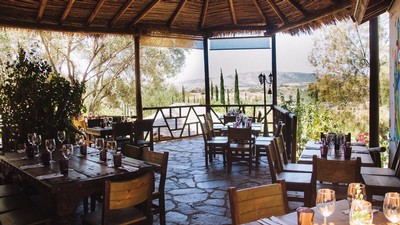
Winemaker Veronica Santiago is one of the most well-respected winemakers in the valley and her palate has shown itself in blind tastings to be one of the best. The wines she and Nathaniel are making are at once elegant, informed, and remarkably old-world in style. These wines follow closely the natural wine-making style championed in the Loire and Saone valleys and emulate closely the body compositions and flavor profiles of the wines made in this area with minimal intervention. All wines are made from organically grown estate vineyards tucked into a tight fold on the valley wall of Valle de Guadalupe.
Made in an ancient winemaking style where white grapes were fermented with the skins to extract color, flavor, aromatics, and structure, this wine is made from 100% Sauvignon Blanc grapes that are left to ferment on the skins for 11 days. From this brief moment of contact comes almost everything that makes this wine sing. Apricot, peach, and other stone fruits on the nose dominate the first act that leads without intermission to a palate, unlike any wine you have ever tried before, again repeating the stone fruit show but adding to it notes of honeysuckle blossoms, fresh herbs, honeycomb, beeswax, and ocean breeze. If you get some, share it. It's the right thing to do. Only 55 cases made.
Bichi La Santa
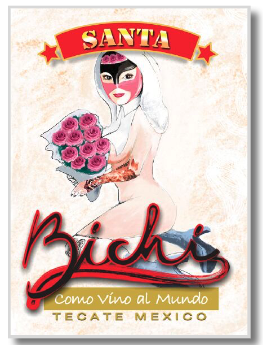
La Santa comes from centenarian, own-rooted Rosa del Peru (Moscatel Negro) vines grown at 2,400 ft elevation on sandy loam and granite soils in Tecate. The grapes were hand-harvested, de-stemmed, and fermented without temperature control in 450-liter concrete tinajas with 45 days of maceration. The wine was then raised for 3 months in ½ stainless steel vats and ½ older barrels. A lively vin de soif, La Santa is almost rosé colored in the glass, delicately floral, with red and dark fruits and juicy acidity. A lovely red wine to serve chilled with charcuterie and cheeses.
While Valle de Guadalupe has overall adopted a more technological and modern approach, Bichi adheres to traditional methods and minimal intervention. Bichi farms 10 hectares of their own Tecate vineyards biodynamically and collaborates with a growing family of organic farmers working vineyard land in Tecate and around San Antonio de las Minas (Valle de Guadalupe). Their work with Misión is notable, but you will also find Rosa del Peru (Moscatel Negro), Tempranillo, and in the case of the No Sapiens vineyard a mysterious grape variety that remains unidentified (possibly Carignan from Spain, or possibly Dolcetto from plantings brought over from Italy in the 1940s). In the winery, grapes are destemmed by hand and gently trodden by foot, and fermentations are carried out by wild yeast in locally made concrete amphorae. The wines are raised in a mix of neutral barrels and steel vats, with a minuscule 10 ppm of sulfur added at bottling to preserve the wine for travel, if needed.
La Casa Vieja
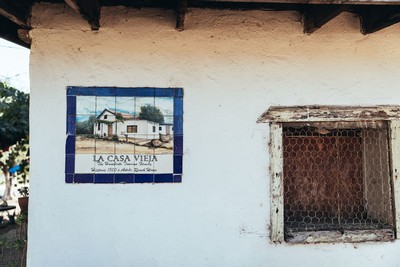
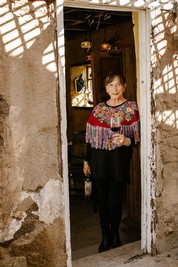
La Casa Vieja is iconic viticulture of Baja California, which has an overlooked but equally important vitis history to Mexico’s better-known neighbors to the North. 18th Spanish Missionaries in Baja had a recipe to slake the thirst of their religious congregants: build a mission, plant a vineyard. They began in Las Californias Altas of New Spain (present-day California) before heading south and branching throughout Baja California’s rugged landscape.
This nearly forgotten vignette is one that winemaker Humberto ‘Tito’ Toscano was content sharing only with those lucky enough to stumble upon his 1800’s adobe ranch in San Antonio de las Minas, a sub-valley of the Valle de Guadalupe. Humberto was born on the property and returned in 2003. He nursed it back to health and has nurtured it ever since. Honoring history and taking a cue from the padres—his father, the missionaries, and local farmhands—Toscano tends his 120+-year-old, dry-farmed, original-rootstock-vineyards, including Mission and Palomino, naturally. When asked if he ever sprays his vineyards, Humberto responds, “With love and wisdom.”
The Mission vines are 120+ years old (some have speculated older), while there is a 150+-year-old ‘Mother Vine’ that anchors the property. The vineyard goes up a gentle slope on the back of the estate. Harvest usually starts in mid-September but can last over a month. Grapes are destemmed by hand, massaged in bunches over a kind of wooden zaranda. The grapes are then crushed by foot and transferred to plastic drums and one 450-liter concrete egg for fermentation and maceration. After native yeast fermentation, which takes about 2 – 3 weeks, the grapes are pressed off with a small, wooden, 55L, hand crank basket press and racked into to neutral, 225 L oak for 6-8 months. Before bottling, the wine is transferred to glass carboys. Everything is racked and nothing is filtered or fined. The entire bottling process, down to labeling, is done by hand. No sulfur is added at any time.
SHOP OUR TRIO OF NATURAL MEXICAN WINES HERE
Delmas Syrah 95+ Reviews
SHOP DELMAS' SYRAH 2017/2018 VERTICAL HERE
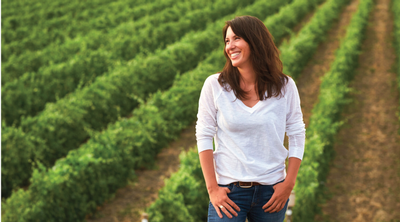
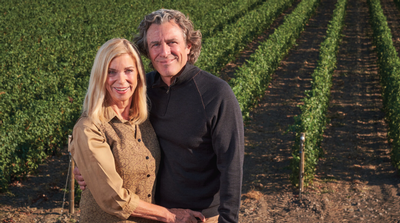
Family owned and operated, Delmas is the realization of the Robertsons’ dream, 35+ years strong, to honor a distinctive place; a distinctive taste. Born of unique geology found within The Rocks District of Milton-Freewater, as well as the climatic eccentricities of the Walla Walla Valley, Delmas is dedicated to producing exceptional wines of enduring value. Elegance is preferred to power and exoticism at Delmas; restraint, nuance, and those impossible-to-define, (pleasurable), qualities that elevate all great wines.
Reviews:
2017 Delmas:
Owen Bargreen, 97 pts: A true heavyhitter, the 2017 Delmas Syrah is entirely sourced from their estate SJR Vineyard in the Walla Walla Rocks AVA, deftly managed by Brooke Robertson. Crafted by superstar winemaker Billo Naravane, MW, the wine is a stunning blend of 91.5% Syrah with the reminder Viognier. Aged for 14 months in 60% new French oak (Troncais) prior to bottling, this needs about an hour of air exposure in order to evolve to its full unveiling. The nose is nothing short of intoxicating, yielding some insanely good range. Potpourri, Umami, pipe tobacco, cedar, and shades of cran-orange aromas all create an amazing effect in the glass. The heady aromas push you back to the glass for more. The texture its astoundingly good, giving off a sexy, silky edge. Red cherry candy, Umami, Hoisin sauce, Asian spice and guava with citrus rind accents as well as shades of black truffle with minerals and stony accents all complete this scintillating new wine. While remarkable in its youth, this will evolve well over the next decade. Drink 2019-2029
2018 Delmas:
Vinous 95 Points: “Full dark red. Pungent spicy lift to the aromas of raspberry, boysenberry, smoked meat, grilled herbs, rose petal and red licorice complicated by white pepper and black olive; coffee and mocha notes emerged with extended aeration. Really remarkably aromatic Syrah: supple, savory and concentrated, conveying strong Rocks salinity to its flavors of raspberry, plum, cured meats, spices and flowers. Shows a strong resemblance to the 2017 but that’s hardly a surprise as Steve Robertson’s wine comes entirely from the parcels of Syrah that he originally planted in 2007. Enticing sweetness and broad, ripe tannins give this seamless wine early accessibility but it has the energy and stuffing for mid-term aging. Really spreads out to saturate the palate on the long finish. This quintessential Rocks Syrah was even silkier with extended aeration. Incidentally, Robertson will make his first varietal Grenache from the 2020 harvest, from a one-acre parcel that he also planted in 2007 (i.e., its 14th leaf).”
French Weekday Sipper 3-Pack, Specs & Pics


Domaine de la Chanteleuserie "Cuvée Alouettes” Bourgueil 2018
- Loire Valley
- 100% Cabernet Franc
- 40 – 50 year old vines
- Sand and clay
- Fermented and aged in stainless steel
- 2-week maceration
- Cassis, red plum, fines herbs


Piron & Lameloise Moulin a Vent 2017
- Beaujolais
- 100% Gamay noir
- Schist soil
- Hand-picked
- Partially destemmed
- Begins fermentation semi-carbonic, then frequent punching down, total of 18-20 days on skins
- Aged 50% in barrel, 50% in tank
- Wild strawberry, peony, cassia stick


Maxime-Francois Laurent “Il Fait Soif” Côtes du Rhône 2018
- Southern Rhône
- 80% Grenache, 20% Syrah
- Clay and limestone
- Biodynamic vineyard
- Native yeast fermentation
- Syrah is fermented carbonically, Grenache fermented partially whole cluster
- 10-day maceration in cement tank
- Aged 6 months in stainless steel
- Unfined, unfiltered
- Raspberry, strawberry preserves, licorice root
Discover FUSO, Italian Terroir and Workhorse Wines
SHOP FUSO TRAVEL ITALIAN TERROIR 6-PACK HERE
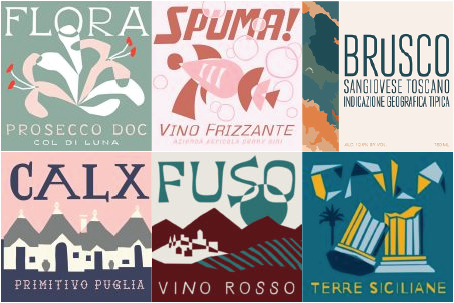
Spring is coming. Winter doldrums are being beaten back into dark cupboards, attics, and basements to hibernate until next year, and vineyards around the northern hemisphere are waking up. Dry January is a distant but surprisingly clear memory, and we are all, hopefully, drinking wine again.
Now, I love a nice bottle of Champagne to celebrate a promotion or birthday, and I enjoy savoring a bottle of Barolo that’s older than I am. Unfortunately, I’m typically working with a Prosecco or Langhe Nebbiolo budget. Lucky for me, the shop always has a ton of fantastic budget options. So, join me in raising a glass to the Tuesday night wines, the workhorse wines, the “little wines”, the three-day weekend Friday afternoon wines, the pizza and burger wines. These are the wines that got us hooked on vino in the first place.
FUSO is one of our favorite recent discoveries in the land of budget bottles. They are a company that sources wine from a wide variety of excellent growers and winemakers throughout Italy, from north in Piedmont all the way south to the island of Sicily. While they lack a regional focus, all of their wines share a consistent approach to viticulture and winemaking. Their requirements, from their website:
- Delicious and terroir-driven
- Made by farmers (not tank-farms)
- Certified organic or practicing organic wineries in conversion
- Native grapes
- Native yeasts
- Low sulphur (45 mg/l or less of added SO2)
- Unfiltered or slightly filtered
- Dry farmed
These wines are light, quaffable, chillable, sustainably grown, and the price is just right. The whole range would be awesome with a charcuterie plate featuring dry-cured salumi, castelvetrano olives, and boquerones, or any number of fancy pasta dishes. Their approachability and natural acidity also make them fantastic for tacos, cheeseburgers, frozen pizza, hamburger helper, tater tots, Thai takeout, tuna casserole, or any number of easy-button Tuesday dinners. Because even Tuesday night deserves a well-made bottle of wine, don’t you think?
Col Di Luna ‘Flora’ Prosecco Brut
- Veneto
- 100% Glera
- Limestone and clay
- In conversion to organics
- Fermented for 20 days in stainless steel
- No malolactic fermentation
- Asian pear, green apple, cut flowers
Denny Bini ‘Spuma’ Frizzante
- Emelia-Romagna
- 100% Lambrusco di Sorbara
- Sand and limestone
- Certified organic
- Double curtain training
- Native yeast fermentation with no temperature control in stainless steel for first fermentation
- Bottle fermented in the spring for 30-60 days using must from the same vintage
- Full malolactic fermentation
- Raspberry, rainier cherry, nettle
Dario Serrentino ‘Cala’ Terre Siciliane
- Sicily
- 90% Nero d’Avola, 10% Grillo
- Limestone and clay
- Certified organic
- 20-60-year-old bush vines
- Native yeast fermented with 6-day maceration in stainless steel
- Aged 6 months in stainless
- Lightly filtered
- Tart strawberry, umeboshi, coppa
Filippo Cassano ‘Calx’ Primitivo
- Puglia
- 100% Primitivo
- Limestone
- Certified organic
- 20-30-year-old vines
- Native yeast fermentation for 15 days, 7 day extended maceration in stainless steel
- Red currant, blackberry, dried and fresh fig
Tenuta Maiano 'Brusco' Sangiovese
- Tuscany
- 100% Sangiovese
- Limestone and silt
- Certified organic
- 15-year-old vines
- Native yeast fermented for 15 days in concrete
- Aged 3 months in concrete
- Lightly filtered
- Pie cherry, leather, eucalyptus
Walter Massa ‘Fuso’ Rosso
- Piedmont
- 100% Barbera
- Clay and limestone
- Practicing organic
- 10-35-year-old vines
- Native yeast fermentation for 12-20 days
- Aged in concrete
- Black plum, blueberry compote, balsamic drizzle
SHOP FUSO TRAVEL ITALIAN TERROIR 6-PACK HERE
Marginalia...in the Spotlight
SHOP MARGINALIA LIGHT RED 3-PACK HERE

Tim Doyle is a true iconoclast of the Walla Walla wine scene. I have yet to come across another winemaker in the valley who thinks about and makes wine with his heady, scientific attention to detail and form while maintaining such a modest and quiet demeanor. His youthful project, Marginalia Winery, produces only a handful of bottlings that upend the norm of what is produced in our area and we are incredibly proud to represent them here at The Thief. Perfect for pairing with a variety of dishes, we welcome you to get adventurous this week with Walla Walla wines and put Marginalia on the table!
Tim splits his time between his winemaking passion and his job as a professor at Whitman College(ancient philosophy and foundations of mathematics), as well as being a husband and father. His commitment to minimal intervention, brainy, somewhat natural wine is a beautiful thing to witness – and it may get you into an epically detailed conversation on the world of wine if that’s what you come looking for. Most of all, however, his wines are delicious, incredibly fun, and worth exploring. We hope you will think so too!
In Tim’s own words: “Lighter red wines and amber wines are not accidental points of focus for Marginalia. I work primarily with these styles of wine because I think they taste good with the foods I tend to eat: rustic breads, strongly flavored vegetables, salty cheeses, olives, lots of herbs and garlic, umbellifer spices, and glugs of olive oil. The wines taste good on their own too, but the real test of a wine is whether it makes a simple meal into a memorable one”.

Light Red Wine 2018
- Breezy Slope Vineyard, one of the highest elevation vineyards in Walla Walla (1700’)
- 67% Pinot Gris, 33% Pinot Noir
- Harvested at 23 degrees Brix, 3.3 pH, and 6.9 g/L titratable acidity on September 10, 2018
- 100% whole cluster co-fermented for one week
- Pressed to barrel at 10 Brix.
- Aged in a mix of neutral 225 L American and French oak barrels
- Lees stirred every other week
- Total sulfur dioxide additions under 40ppm
- Bottled unfiltered, with a small quantity of light lees
SHOP MARGINALIA LIGHT RED 3-PACK HERE
Kermit Lynch's Thoughts on Etna's Vigneti Vecchio
Shop our Etna! Vigneti Vecchio 3-Pack HERE
From Kermit Lynch:



While viticulture on the slopes of Mount Etna dates back thousands of years, only in the last decade or two have the wines produced on Sicily’s mythical volcano entered the global spotlight. Eager to exploit the terroir riches of this stunning natural wonder, waves of newcomers from around Italy and abroad have settled, relying on both traditional methods and modern enology to search for Etna’s truest expression.
The fascination with Etna in the eyes of growers and consumers alike stems not only from its fertile soils of sandy, decomposed volcanic rock but also from the elevation that allows its wines to retain an uncommon freshness and delicacy at such a southerly latitude. Reaching over 1,000 meters above sea level, Etna’s vineyards are some of Europe’s highest, and the cool nights late in the growing season favor slow ripening and the development of extremely complex aromas at relatively low alcohol levels. Harnessing this potential to create wines of nuance and finesse, however, is another story altogether: it requires vision, dedication, and careful execution. It is with tremendous excitement, then, that we announce our collaboration with Vigneti Vecchio, a small family-run estate on Etna’s northern face.
Carmelo Vecchio and his wife, Rosa La Guzza, did not come from afar to make wine on Etna: they are true locals, raised in the heart of the vineyards. Carmelo began working at the nearby Passopisciaro winery at a young age, and after fifteen years of hands-on experience, the time came to strike out on his own. From barely one hectare of vines up to 130 years old inherited from Rosa’s family, the couple took matters into their own hands: sustainable farming by hand, with the goal of achieving an elegant balance in the grapes; micro-vinifications in the tiny cellar beneath their home, with respect for tradition and terroir; and aging the wines in used barrels before bottling without fining or filtration.
Armed with excellent raw materials along with Carmelo's years of experience and an appreciation for ancient local practices such as skin maceration for whites and blending white grapes into the reds, Rosa and Carmelo succeeded in crafting delicate, pure, and highly refined wines from their inaugural 2016 harvest. While Etna still searches for its identity, Vigneti Vecchio demonstrates that this towering volcano rising from the Mediterranean can in fact produce wines as beautifully nuanced as anywhere else in Italy.
Carricante Sicilia Bianco “Sciare Vive” 2018
- 90% Carricante, 10% indigenous varieties (Minnella, Inzolia, Grecancico, Catarratto)
- 3 day skin maceration in stainless steel tank
- Must is pressed, then primary and malolactic fermentation in 500-L oak barrels
- Aged 7 months in 500-L oak barrels on lees
- Racked off lees into stainless steel tank 1 month before bottling
- Wines age in bottle for 1 month
- Does not receive Etna Bianco DOC because one parcel is located just outside the appellation boundary
- Vines planted between 1,600 and 2,800 feet above sea level
- Fennel, pine resin, wildflower honey
Etna Rosso “Contrada Crasà” 2017
- 90% Nerello Mascalese, 10% indigenous varieties (Inzolia, Grecanico, Catarratto)
- Grapes sourced from Contrada Crasà
- All grape varieties are fermented together
- 15-day skin maceration and primary fermentation in stainless steel tank
- Light punch-downs and pump-overs during fermentation
- Must is pressed, followed by malolactic fermentation in 500 L oak barrels
- Aged 9 months in 500-L oak barrels on lees
- Racked off lees into stainless steel tank 1 month before bottling
- Aged in bottle for 8 months
- Vines planted at 2,100 feet above sea level
- Cherry compote, white pepper, ash
Terre Siciliane Rosso “Donna Bianca” 2018
- 50% Nerello Mascalese, 20% Nerello Cappuccio, 20% Alicante, 10% indigenous white grapes
- Vines located in northern Etna, just outside of the Etna DOC
- All grape varieties are fermented together
- Grapes are de-stemmed
- 12-day skin maceration and primary fermentation in stainless steel tank
- Light punch-downs and pump-overs during fermentation
- Aged 9 months in 500-L oak barrels on lees
- Aged 1 month in bottle
- Located at 2,700 feet above sea level
- Red cherry, lavender, rosemary

